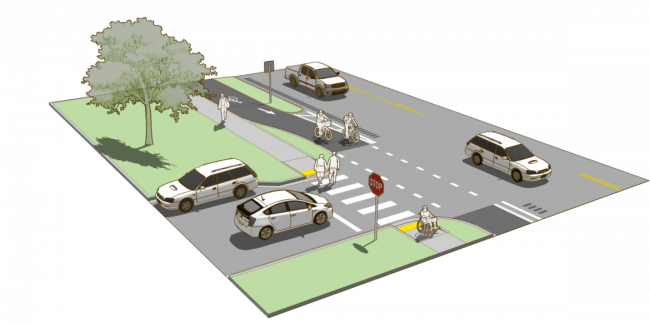SAFER ONLINE SEMINAR: SAFER TASK FORCE & THE ROLE OF ROAD DESIGN
The seminar week 43 focuses on two topics; one is a SAFER special project with background in the ongoing pandemic. The other is a SAFER pre-study on how effective design countermeasures can support vulnerable road users’ perceptual and cognitive tasks and also to give them support to make better behavioral choices in critical complex traffic situations.
__________________________________________________________________________________________
Task Force: Hygiene procedures in test with research persons
Speaker: Arne Nåbo, Research director for Vehicle systems and Driving simulation at VTI
The main concern for this task force is the health of research persons and test persons and own personnel in the use of driving simulators, VR studios, vehicles or similar test facilities. We all are aware of our corporate responsibility for the well-being and safety of all people in our activities. Now, under- and after the corona pandemic, health concerns are put in focus and we must take appropriate measures also in our research and testing activities. How can experiments involving test persons still be conducted sharing an enclosed cabin or VR equipment? What might standard safe hygiene procedures be? Will we have to require drivers to wear masks? How do we implement distancing while being in preparation or post-experiment interviews? We can all say that there will be a major impact on our procedures and most likely, we will have to deal with this for quite some time. Hygiene protocols for experiments involving test persons will be a concern for all organizations executing these activities, both in industry and academia.
The role of road design to support bicyclists yielding behavior at T-intersections on segregated paths: A feasibility study in bicycle simulator
Speaker: Debora Benedetta Lombardi, PhD, Human Behavior Specialist & Environmental Psychologist, Gothenburg University
Segregated spaces to keep VRUs away from the car lane have often been implemented to improve traffic safety. However, it has often resulted in poor-designed common spaces, where road users with different behavioral patterns and needs, e.g., bicyclists and pedestrians, are kept together. Intersections are critical spots in the traffic system. When regulating the traffic flow between bicycle and walking paths, poor-signalized intersections are even more problematic because of the lack of regulation in place to guide priority negotiation. Yielding behavior requires a large amount of visual, mental and physical resources for the bicyclist as it involves several cognitive and behavioral tasks, including information processing, adjusting speed (e.g. deceleration) and lane positioning.
The present study sets out to identify the effective amount of information conveyed by road markings and signs to support the bicyclist’s cognitive and behavioral tasks and improve the perception of safety at T-intersections on segregated paths. Moreover, the study intends to verify the effectiveness of bicycle simulators to investigate the interaction between vulnerable road users, i.e. bicyclists and pedestrians.
The seminar will give an overview and findings for this SAFER pre-study.
______________________________________________________________________________________
This seminar is only open for SAFER partners and affiliates. Missing your invitation? Please contact Mikael von Redlich.

